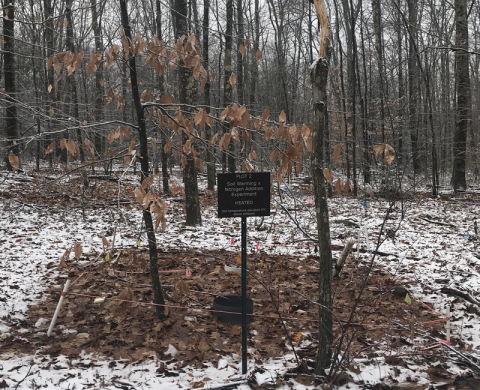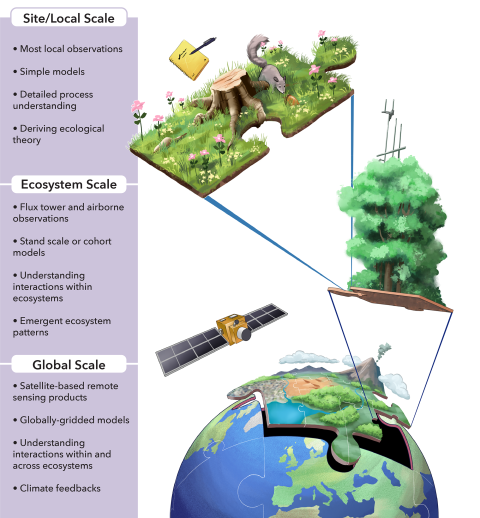How carbon and nutrients cycle within and into/out of these ecosystems is fundamental to how they function. Ecosystems are not static entities and are subjected to disturbances, both natural and human-caused, that move them away from their current state. SoilBioME aims to understand how human activities are impacting terrestrial ecosystems, with an emphasis on soil biota and nutrient cycling processes.
We are specifically interested in how anthropogenic stressors (e.g., climate change, atmospheric nitrogen deposition, agricultural management, invasive species) affect the composition and diversity of soil microbial communities and microbial-mediated carbon and nitrogen cycles. We work at the interface between ecosystem science, microbial ecology and soil science, combining microbiological methods with stable isotope analysis and a variety of soil physical and chemical approaches to examine structure-function linkages.


Artwork by Elena Hartley (elabarts.com)
Site/Local Scale
- Most local observations
- Simple models
- Detailed process understanding
- Deriving ecological theory
Ecosystem Scale
- Flux tower and airborne observations
- Stand scale or cohort models
- Understanding interactions within ecosystems
- Emergent ecosystem patterns
Global Scale
- Satellite-based remote sensing products
- Globally-gridded models
- Understanding interactions within and across ecosystems
- Climate feedback